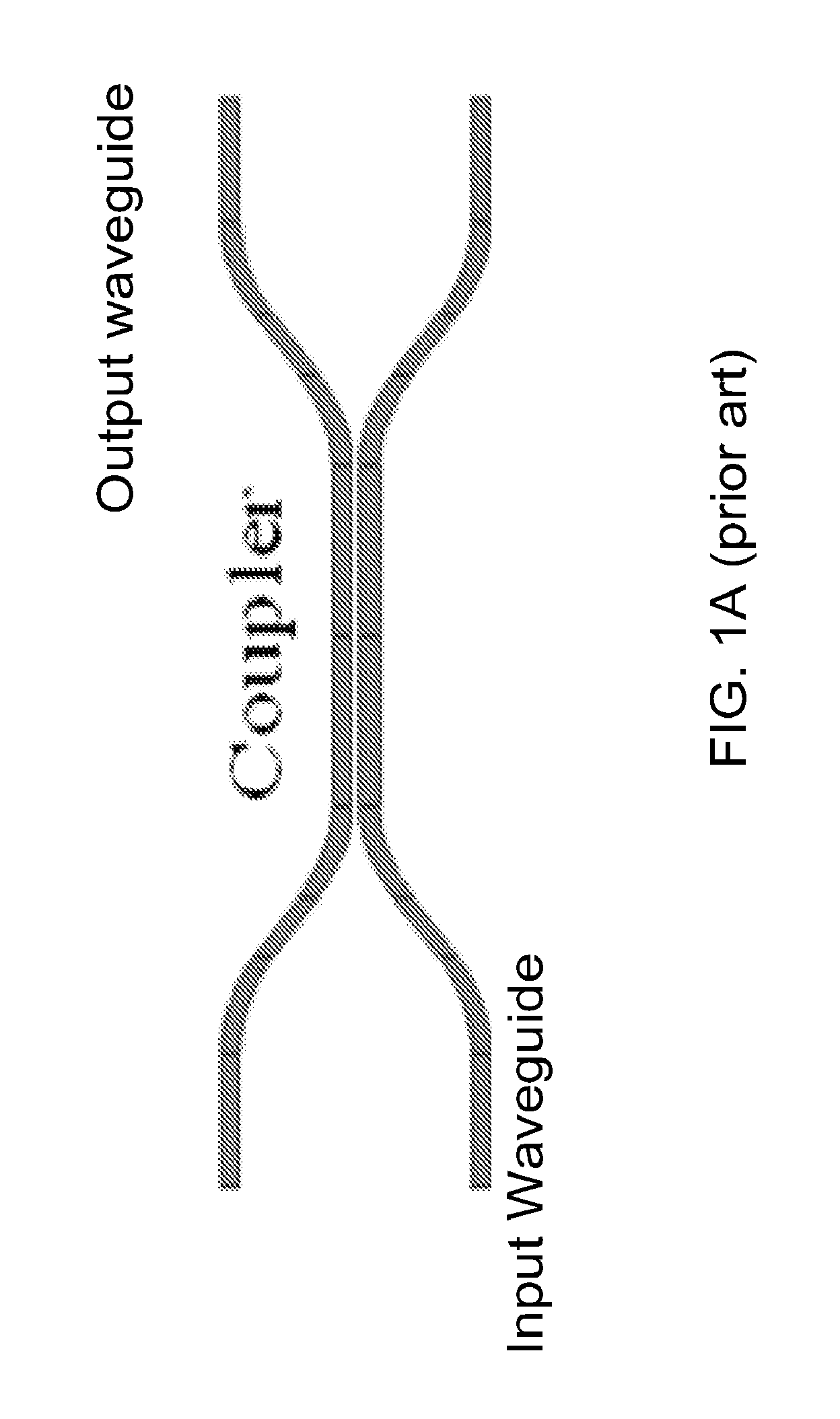Coupled waveguide photo detector
a photo detector and waveguide technology, applied in the field of photo detection, can solve the problems of limiting the performance of many systems that depend on low distortion operation, generating non linear distortion at high optical power, and generating non linear distortion for typical photo detectors
- Summary
- Abstract
- Description
- Claims
- Application Information
AI Technical Summary
Benefits of technology
Problems solved by technology
Method used
Image
Examples
Embodiment Construction
[0020]In a waveguide photo detector of the invention, currents are induced in an electrical transmission line. To achieve in-phase addition of electrical currents collected from different photo detectors or different parts of the extended photo detector structure while the optical wave propagates, the currents induced in the coupling section in different parts of the extended detector or a series of detectors are transmitted via an electrical transmission line which is velocity matched to the optical waveguide.
[0021]An embodiment of the invention provides a directional coupled waveguide photo detector device. The device includes an input waveguide. An output waveguide is optically coupled to the input waveguide through a coupling section. Coupling is achieved in the coupling section with two coupled waveguides (portions of the input and output waveguides similar to a directional coupler) or a multimode interference coupler. The coupling section preferably has a nonuniform coupling c...
PUM
 Login to View More
Login to View More Abstract
Description
Claims
Application Information
 Login to View More
Login to View More - R&D
- Intellectual Property
- Life Sciences
- Materials
- Tech Scout
- Unparalleled Data Quality
- Higher Quality Content
- 60% Fewer Hallucinations
Browse by: Latest US Patents, China's latest patents, Technical Efficacy Thesaurus, Application Domain, Technology Topic, Popular Technical Reports.
© 2025 PatSnap. All rights reserved.Legal|Privacy policy|Modern Slavery Act Transparency Statement|Sitemap|About US| Contact US: help@patsnap.com



